Concordia University Texas (CTX) documents undergraduate and graduate student achievement outcomes that reflect its mission of empowering students of all backgrounds to lead lives of critical thought, compassionate action and courageous leadership.
Student achievement is measured, evaluated, and tracked using six outcomes that fall within three broad categories:
- Retention and Completion
- Academic Engagement and Proficiency
- Licensure, Certification, and Post-Graduate Activities
Current measurement, evaluation, and tracking of achievement outcomes are summarized
below. Thresholds of acceptability for student achievement are generally set by CTX
to align or exceed those of national student samples, our IPEDS Comparison Group,
private institutions of similar size, or standards set by licensing bodies such as
the Texas Education Agency. Measures of student achievement that consistently fall
below a set threshold are identified by academic leadership and targeted for improvement.
Retention & Completion
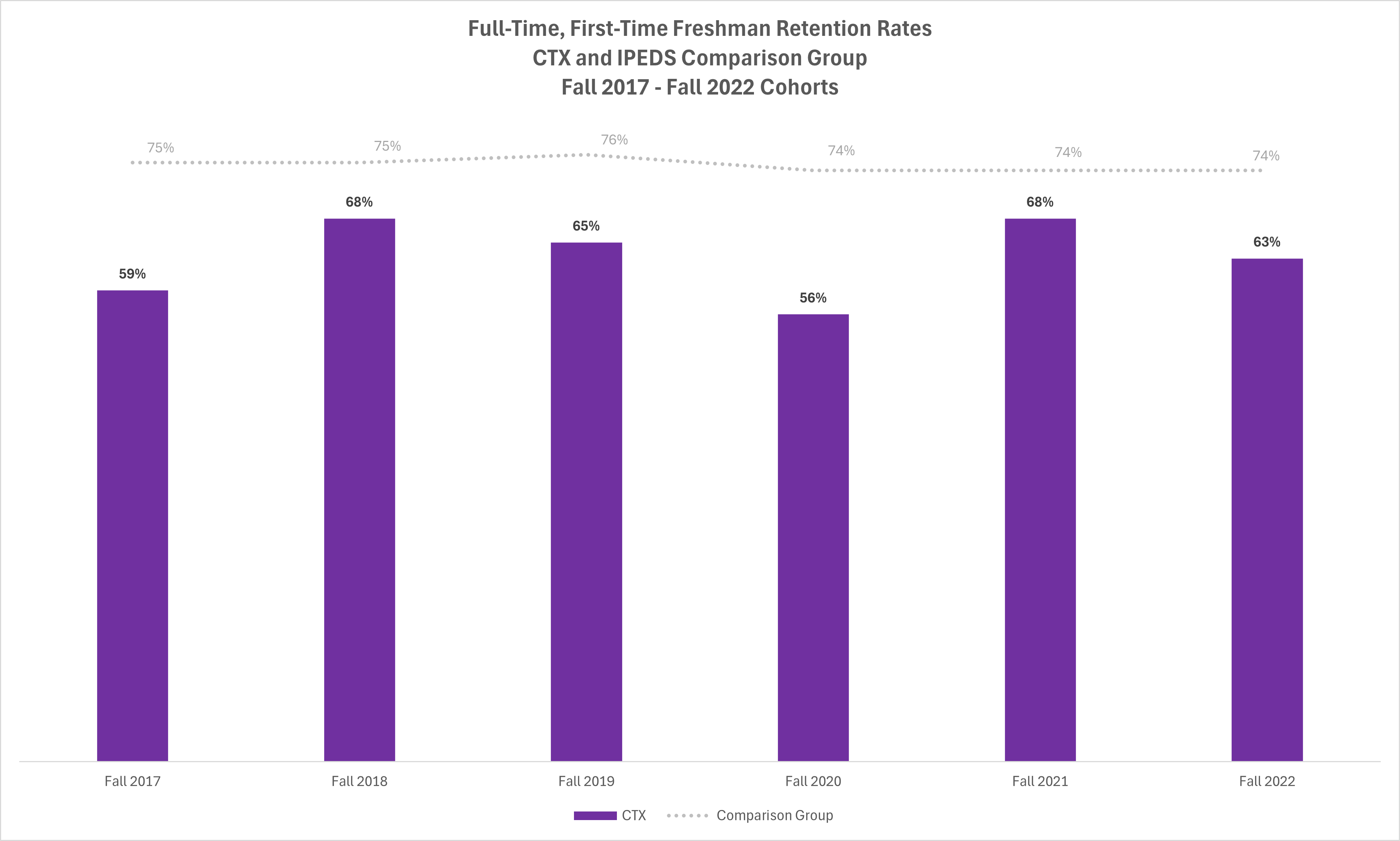
- Between Fall 2017 and Fall 2022, an average of 63% of first-time, full-time freshman returned for their second year (fall-to-fall persistence).
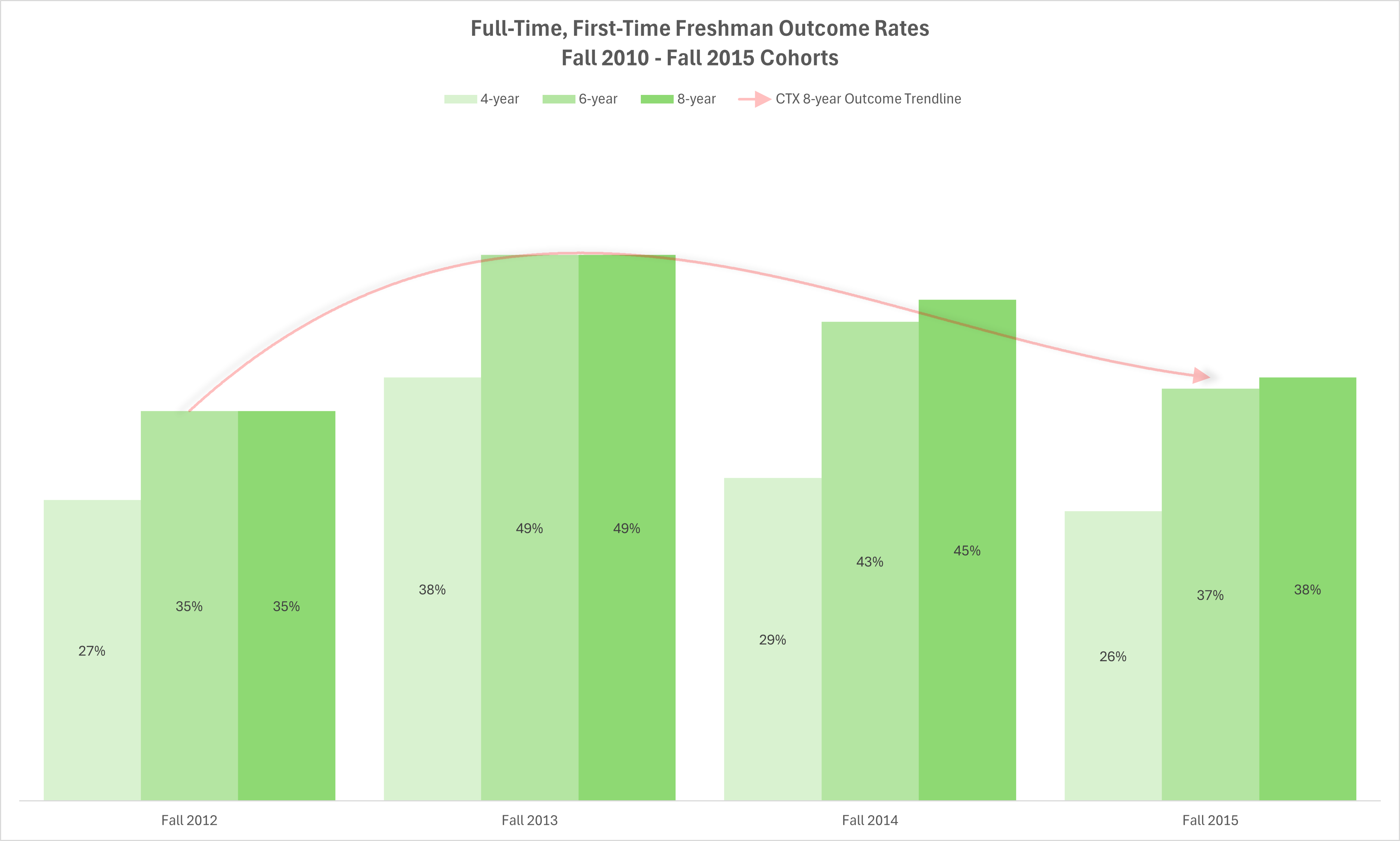
- CTX’s chosen SACSCOC graduation rate metric is the IPEDS 8-year Outcome Rate. This rate indicates the number of students from a designated first-time, full-time Fall undergraduate cohort who completed their degree at CTX within 200% of the normal time to completion (e.g., within 8 years of entering). Because the 8-year Outcome rate also includes the highest potential number of completers from a designated entering Fall cohort—capturing students who complete within 4-years, 6-years, and 8-years—it is a helpful metric by which an institution can assess student achievement and the effectiveness of its academic programs. CTX’s goal is that its 4, 6, and 8-year Outcome rates are as closely aligned as possible and to increase its 4-year Outcome rate.
For the 2015 cohort year, the most recent available, CTX achieved an 8-year Outcome
rate of 38%, a 6-year Outcome rate of 37%, and a 4-year Outcome rate of 26%. Further
comparisons of each Outcome Rate metric are provided below.
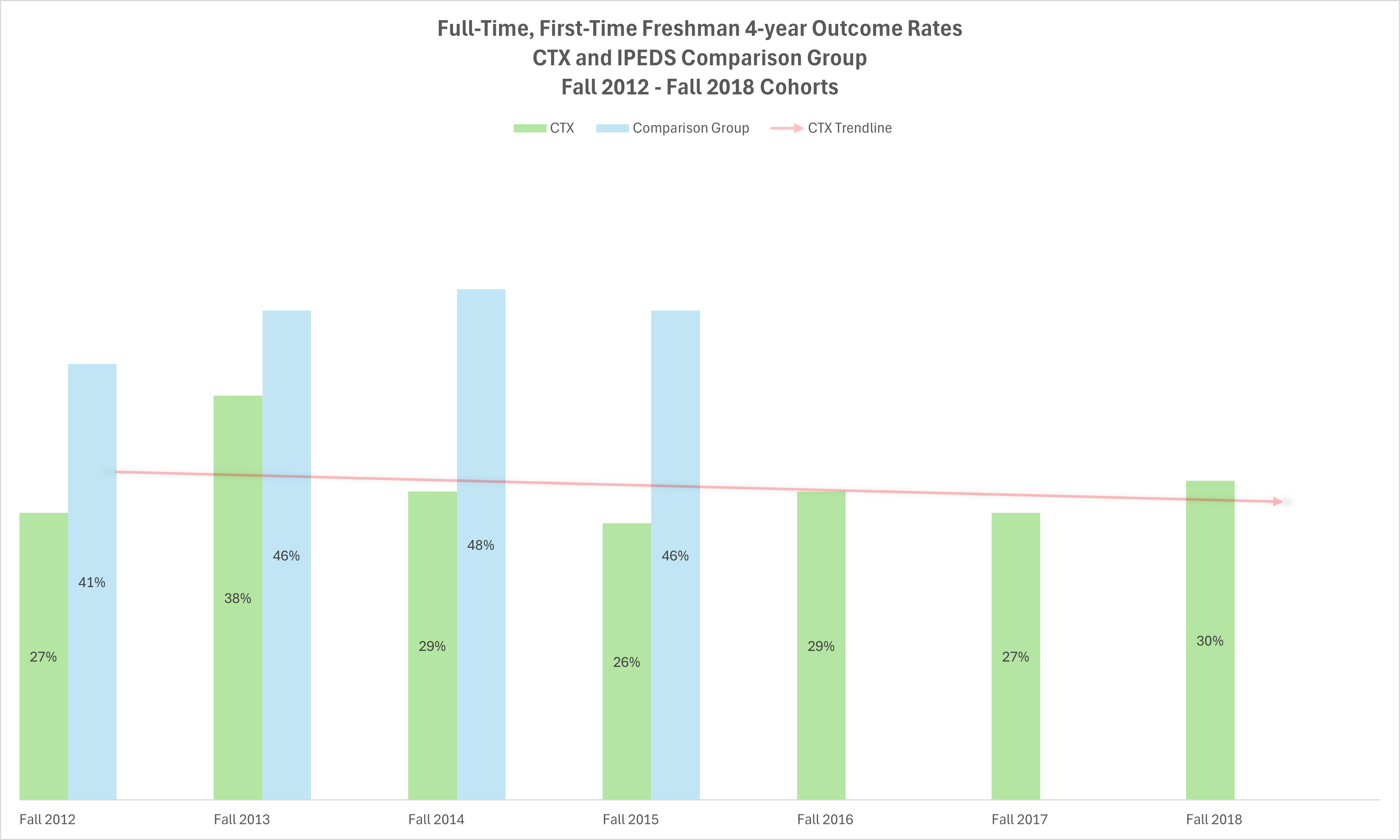
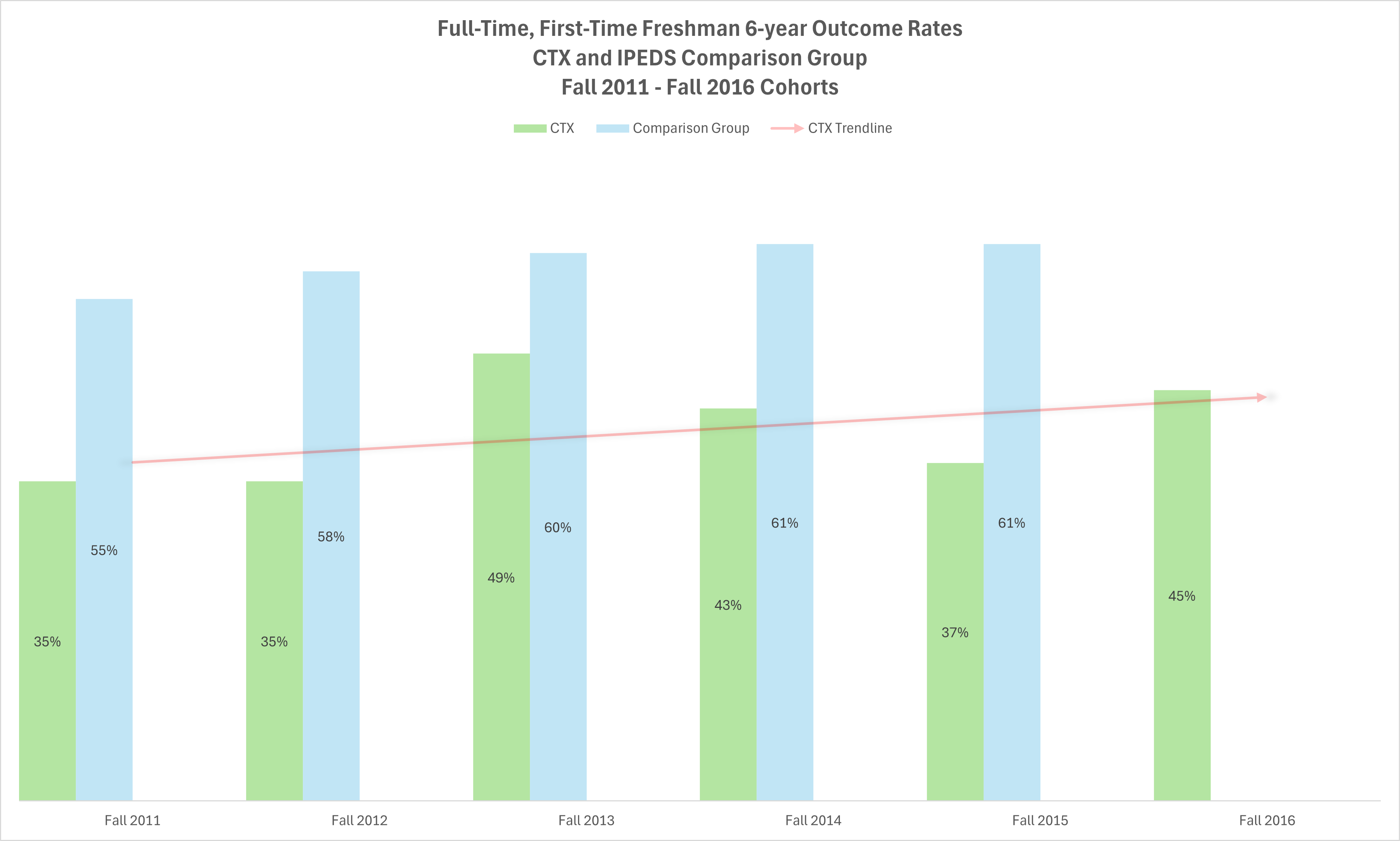
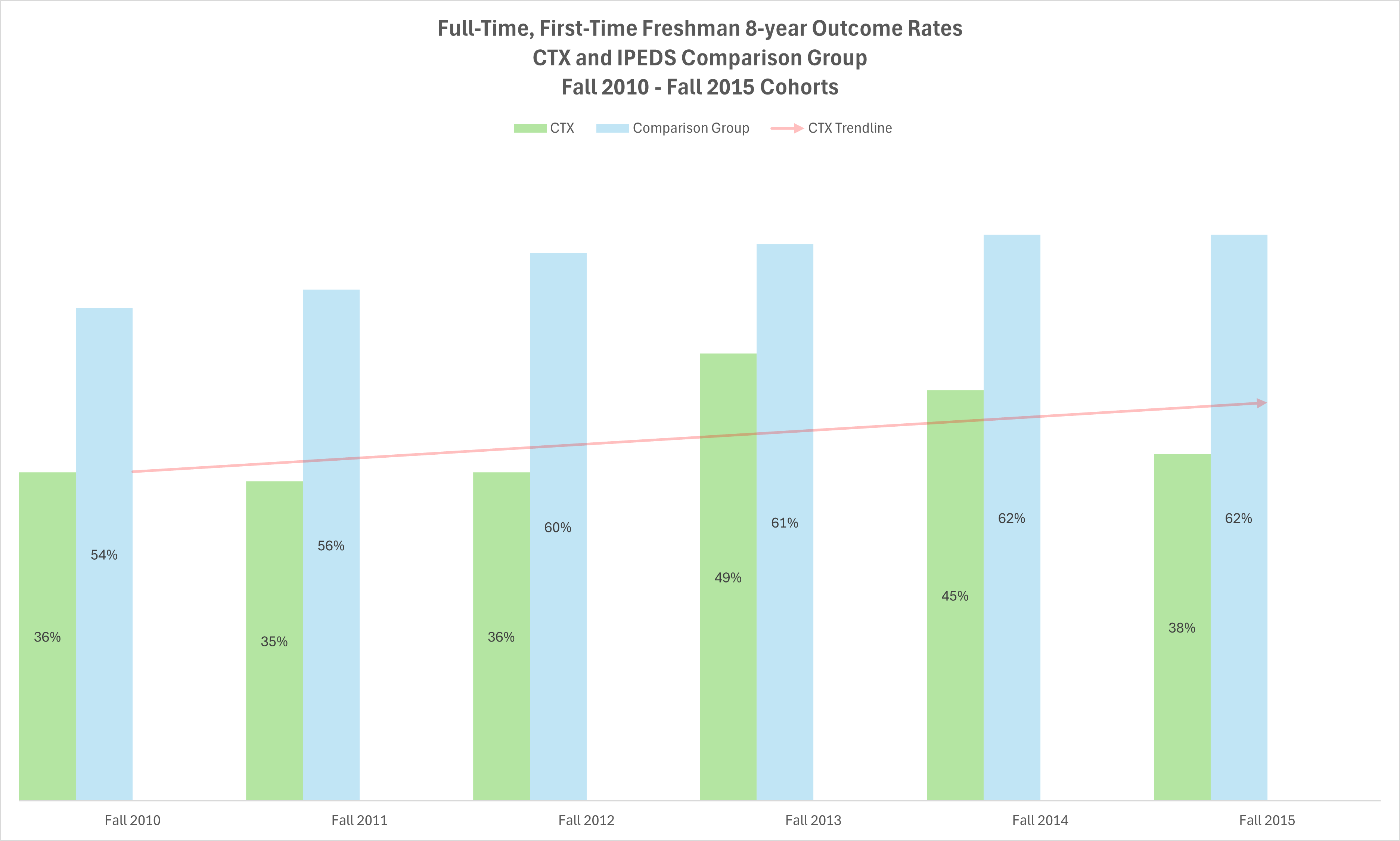
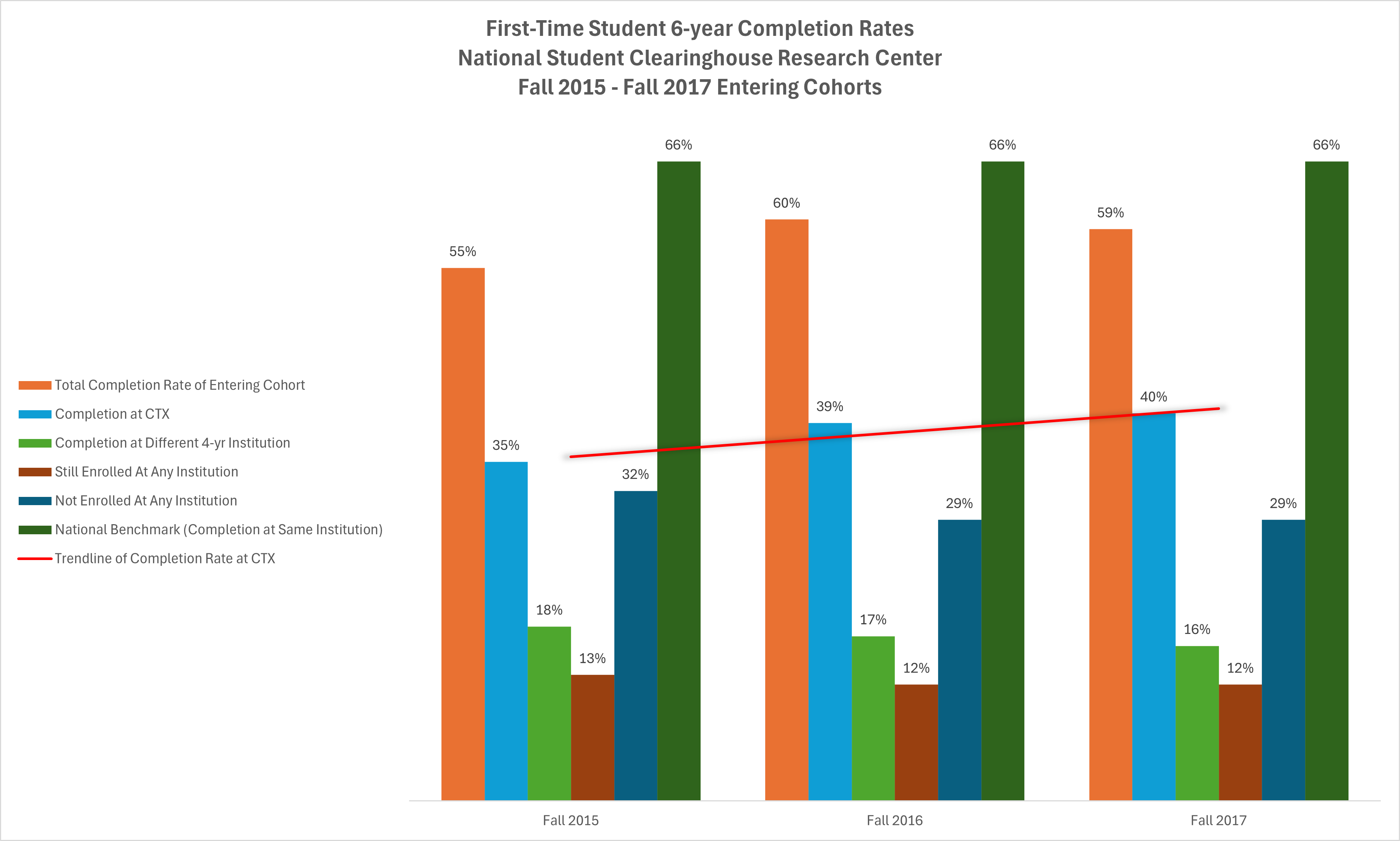
- This graph measures the average completion, continued enrollment, and stop-out enrollment rates of first-time students entering CTX in the designated Fall term within 6-years of matriculation, regardless of enrollment status during their time at CTX or elsewhere (e.g., full-time only, part-time only, or a mixture). The data and analysis come from enrollment and degree information submitted to the National Student Clearinghouse by CTX and other four-year, private non-profit institutions. CTX's goal is to align with or exceed the national benchmark of completion at the same institution. Since Fall 2015, CTX has improved its rate of first-time students completing their degree at CTX (denoted by the red trendline).
Licensure, Certification & Post-Graduate Activities
Student achievement is also measured and evaluated using licensure, certification, and employment rates of CTX graduates.
Graduates of our both our undergraduate and graduate education programs have on average historically high rates of passing Texas Education Agency (TEA) exams required for public school certification as teachers and administrators. CTX has a pass rate goal of 80% for both the Pedagogy and Content Pedagogy exams. According to the most recent published data from TEA, CTX’s aggregate Pedagogy Exam pass rate was 100% in 2023, and the aggregate Content Pedagogy Exam pass rate in 2022 was 98%.
Achievement of students enrolled in our undergraduate Nursing program (BSN) is tracked annually using completion rates, National Council Licensure Examination (NCLEX) pass rates for first-time test takers, and graduate employment rates within six months of program completion. CTX’s goal for program completion is 70%; for the 2023-2024 academic year, the program completion rate was 80%. For NCLEX first-time test taker pass rates, CTX’s pass rate goal is 80%; according to preliminary data from 2024, the pass rate for first-time test takers was 97.18%. Finally, CTX’s goal for graduate employment rates within six months of program completion is 80%; for the 2023-2024 academic year, the rate was 84.75%.
CTX began tracking undergraduate employment outcomes and participation in postgraduate education in 2017 using the Higher Education Data Sharing (HEDS) Consortium's First Destination Survey. Results from the HEDS First Destination Survey in 2020 found that 63% of respondents reported being employed full-time after graduation, almost double that of other institutions participating in the survey (38%). In addition, 12% reported continuing with the education at the post-graduate level, and 18% seeking employment.
[This page was last updated in February 2025.]


